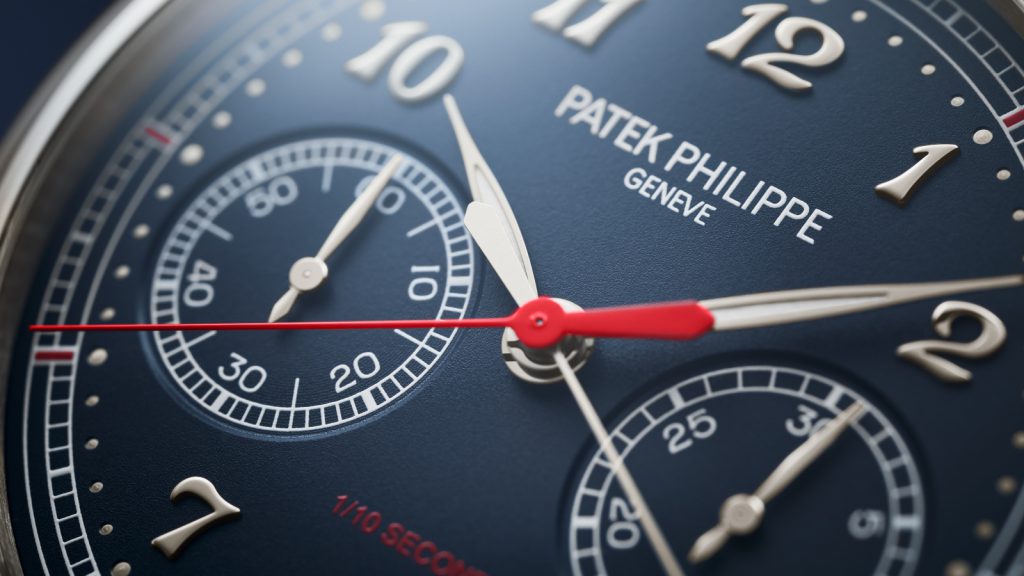From the outside, the Patek Philippe Ref 5470P looks like a vintage-styled chronograph that could have been made any time in the last 70 years or so. But lurking beneath its 41mm platinum case, blue lacquer dial, Breguet-style numerals and railway track markers is the height of Patek Philippe’s modern-day sophistication. The Ref 5470P is the first time the manufacture has created a 1/10th of a second chronograph in a wristwatch.
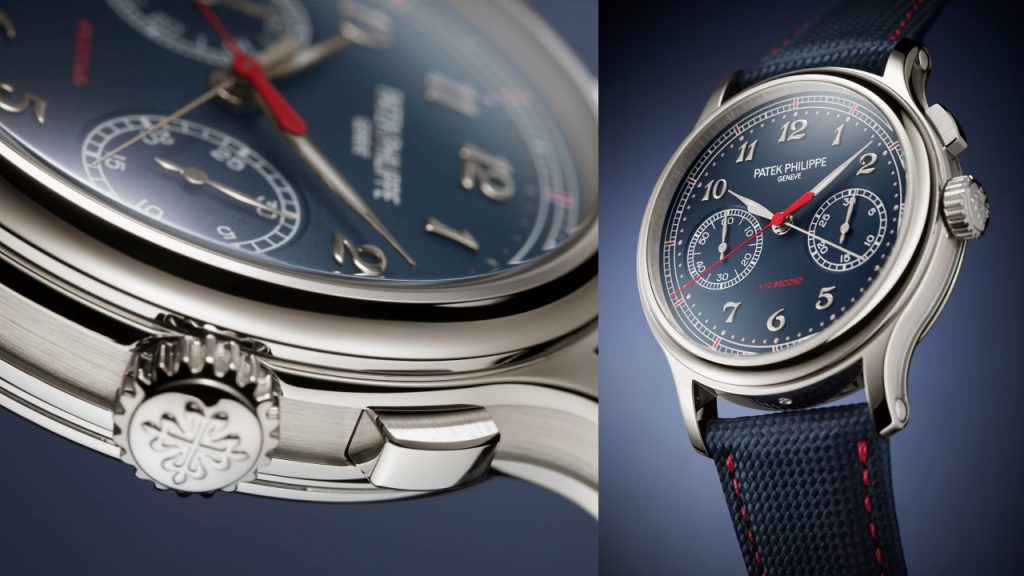
Chronograph innovation is nothing new to Patek Philippe. In fact, in the 1920s and 1930s, in the heady days of pocket watches and before series production as we know it, the manufacture had already created split-seconds and chronograph movements which measured to 1/10th of a second. But more recent times still have plentiful yields: it was not until 2009 that Patek Philippe first built a classical chronograph movement entirely in-house, in the traditionally minded calibre CH 29-535 PS that was manually wound and boasted of column wheel and horizontal clutch – and six patents, besides. This formed a springboard for more complex calibres such as the split-seconds CHR 29-535 PS. And now, it forms the base of the CH 29-535 PS 1/10, which is the 5Hz movement for the new Ref 5470P 1/10th Second Monopusher Chronograph.
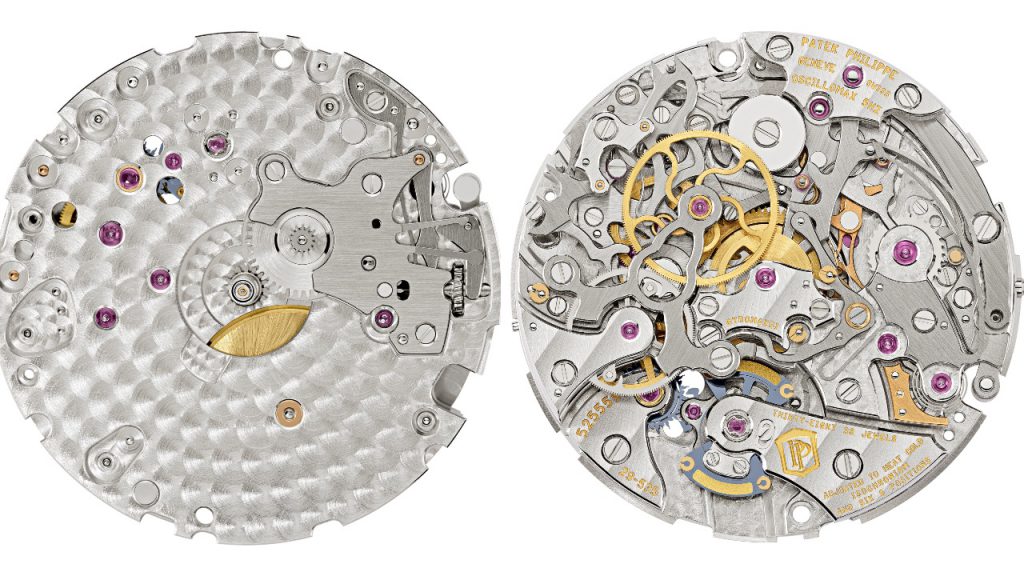
Its layout is of the traditional two-register variety of chronograph, with running seconds at 9 o’clock and an instantaneous jumping minutes totaliser at 3 o’clock. There are two centrally mounted seconds hand: one is a conventional 60-second counter, and the other, with a splash of contrasting red lacquer, is the 1/10th of a second hand. The latter completes a revolution once every 12 seconds. In this way, users of the 5470P miss out on nothing – the conventional seconds hand for easy, familiar reading, and the 1/10th of a second hand when finer resolution is called far.
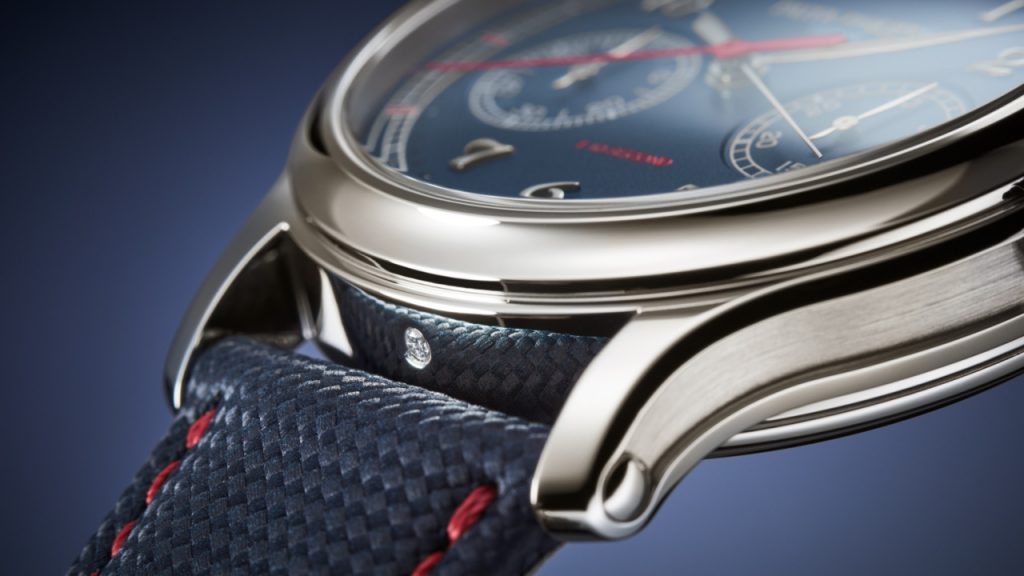
Precision and energy were the dominant considerations in its development. To this end, Patek Philippe elected to use its Oscillomax ensemble, a silicon-heavy, exceptionally efficient setup that includes balance spring and escapement. It was first seen in the Advanced Research Ref. 5550 Perpetual Calendar of 2011. Other innovations include an anti-backlash driving system for the fast-moving 1/10th of a second hand (which, by the way, is made of an ultra-lightweight silicon alloy), extremely fine toothing to the order of 30 microns on the pinion driving said hand, and shock absorbing mechanisms to protect the watch’s reliability and performance. This is hence an incredibly complex movement, behind which is Patek Philippe’s customary thoughtfulness and expertise. The manufacture considers it a Grand Complication model, putting it shoulder-to-shoulder with tourbillons and minute repeaters.
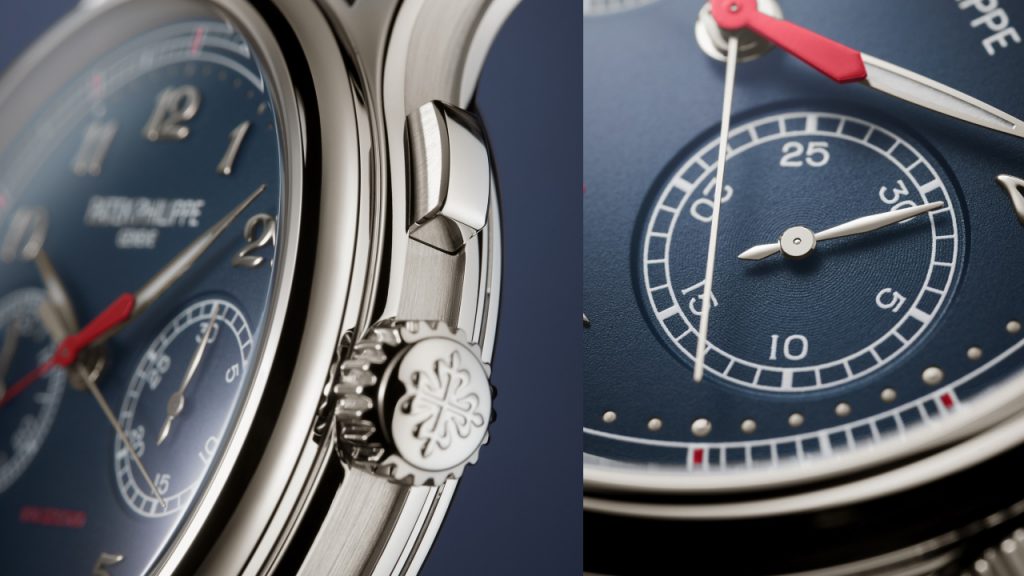
A total of seven new patents were involved in the movement’s development, and 31 total if one were to include the patents from Oscillomax and the CH 29-535 PS movement from 2009. In a sense, the 5470P is a neat summation and understated showcase of some of Patek Philippe’s most significant technological developments from the past 15 years.
